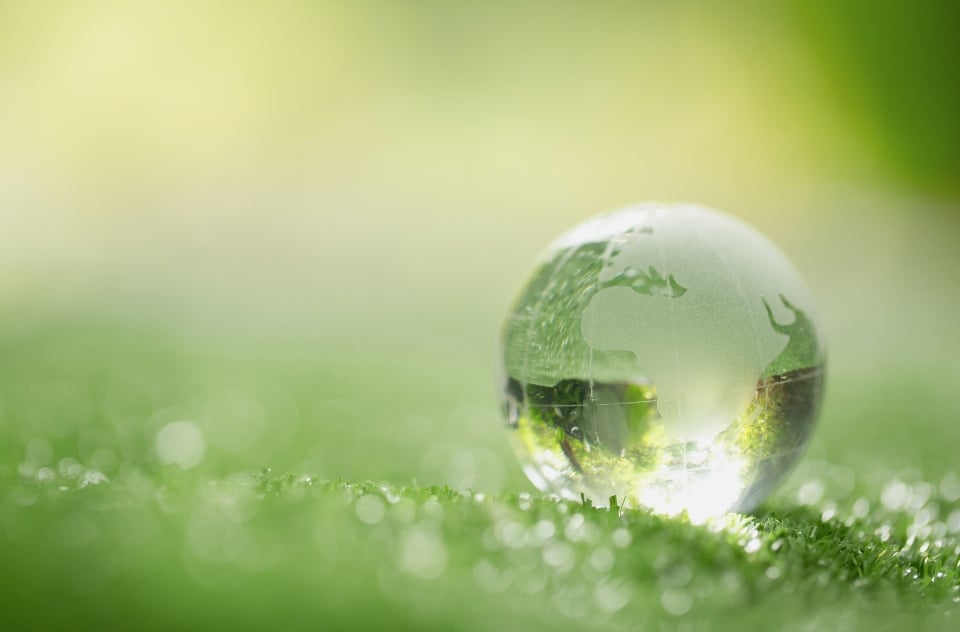Think about this for a moment: every product you purchase is packaged in some way, shape, or form—and it should go without saying that some packaging is more environmentally friendly than others. Over the past several decades, we've seen a rise in packaging substrates that lack the sustainability properties of traditional materials like paper, wood, and cardboard, notably as it pertains to plastic packaging.
While there are cost benefits associated with plastic packaging, the environmental consequences are devastating. This is because the vast majority of plastic packaging is not biodegradable, and is thereby sent to landfill or, even worse, into the environment. To date, some 9.2 billion tons of plastic has been produced, with only 9% of this amount having been recycled properly. If something doesn't change, it's estimated that there will be more plastic than fish in the ocean by the year 2050.
The good news is that it's not too late to change, and 2021 is the perfect year to start fresh with a more sustainable packaging strategy. Studies show that using more sustainable packaging materials isn't just good for the environment, but preferred by consumers as well. In fact, it's estimated that one out of every three Americans have become more cognoscente about the packaging of the products that they're purchasing and have moved away from wasteful formats to more responsible ones.
So just how can you incorporate more sustainability into your overall packaging strategy in the New Year? Here's a look at some tips and suggestions:
Revert to Corrugated Formats
Conventional packaging formats like paper and cardboard aren't just effective when it comes to a product protection standpoint, but they're also much more sustainable than plastic packaging. This is largely because these substrates are easily recyclable, reusable, and biodegradable. According to the Environmental Protection Agency, more than 80% of all paper and paperboard packaging is annually recycled. This is largely thanks to the widespread availability of recycling infrastructure for these substrates and the availability of curbside recycling in most municipalities throughout the country.
Boxes are also reusable, commonly used for storage purposes around the home or office. And if for some reason the packaging does go to the landfill, cardboard breaks down and decomposes in as little as three months. In other words, ditching the plastic pouch, bag, or rigid container for sustainable boxes is an ideal way to incorporate more sustainability into your packaging.
Move Away from Single-Use Formats
One of the biggest issues with packaging is that of single-use formats. Though perhaps more convenient, about half of all 300 million tons of plastic produced worldwide each year is dedicated toward single-use packaging. Moving away from the single-use plastics or moving to sustainable substrates for such packaging is one of the most impactful things that you can do if you're serious about helping the environment.
Use Less Packaging
Regardless of the packaging substrate that you're working with, using less of it is a good strategy when it comes to sustainability. When this occurs, you're not just using less overall material, but you're also benefiting the environment throughout the supply chain.
For instance, downsized or downgauged packaging means you can fit more of it on trucks, thereby doing more with less. By reducing the number of truckloads, you're reducing transportation costs and removing exhaust emissions from the environment.
How can you use less packaging? It all starts with the design. Partner with a packaging firm that can help you reduce the overall footprint of your packaging while ensuring that the product you're packaging will remain properly protected.
Use Recycled Materials
We already told you that more than 80% of paper and cardboard packaging is recycled—and the good news is that you can put this material to work for you in your overall packaging strategy. By this, we mean making it a point to move away from virgin materials and use recycled materials when possible. Using recycled materials translates to relying on fewer natural resources and helping the overall environment.
Work With Packaging Partners that Share Your Sustainability Goals
Is the packaging partner that you work with committed to meeting your sustainability goals? This is another important aspect of working to become more sustainable overall. In order to make your packaging more sustainable, you need a partner that is serious about sustainability.
A good approach is multi-faceted and may involve everything from the use of creative, environmentally-friendly materials to a strategy that involves reliance on organizations such as the Sustainable Packaging Coalition or the Sustainable Forestry Initiative. A good partner can go a long way toward helping you achieve any sustainability goals. Let this partner serve as your ally in any quest to do it.
Contact Bay Cities Today
For more information about how to incorporate more sustainability into your packaging and how the right partner can aid such efforts, contact Bay Cities Packaging & Design today.
616.228.1072 / 4635 44th St SE, Suite C150 Grand Rapids, MI 49512 / inbound@manobyte.com


/BC_Logo2_White.png?width=300&height=83&name=BC_Logo2_White.png)